Scroll through the lesson and click on notation/video/audio links to load the interactive players.
Please subscribe to get full access to all lessons for only $7.95/month PLUS 1 week free trial.

Riff Interactive lessons are
LESS expensive and
MORE interactive than alternatives!
More Info
|
|
| Lesson Subject:
Acoustic Folk Guitar |
| What you learn:
Descending Bass Lines & Polytonal Chords |
| Teacher: Michael Johnson |
Michael: Welcome to the interactive lesson on
Acoustic Folk Guitar. This is the 2nd lesson in our
series, last week we covered some basic picking
patterns, this lesson will cover descending bass lines while playing chords and
polytonal chords, these are essential techniques used by
folk guitarists like Bob Dylan, James Taylor, etc. Songs like "Blowin' in the
Wind" and other compositions are based on using these concepts. Even acoustic rock songs by bands like
Led Zeppelin use these techniques. Here's our lesson sample and our first
pattern:
Lesson Sample
Pattern 1
Michael: We'll base the pattern on a common D and G chord. For this pattern you pick the open D
string and then strum the higher strings of the chord and then play the open G on the 6th
string (E) and strum the rest of the
chord. Now we can add other descending chords
and bass lines.
Pattern 2
Michael:
Notice how the lower notes descend, they
follow the D major scale. Here's the scale pattern.
Michael:
I actually started this pattern on the
E, this would be the E Dorian
mode. They all have RELATIVE notes to the D
Major, here's the descending notes.
Michael:
The trick is holding the chords and then picking the notes that
descend. Here's our next
pattern.
Pattern 3
Michael:
This next pattern moves to B minor and uses the same
technique. This line also ascends the pattern as
well, here's some of the
fingerings.
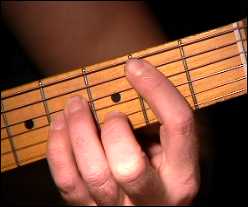
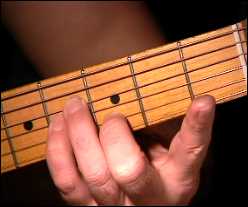
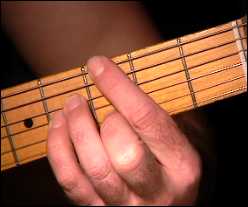
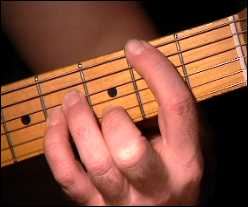
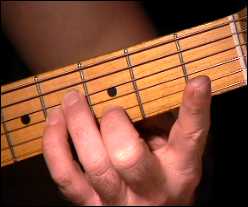
Michael:
Do any of you know what all the main related chords would be for D
Major?
mic: maj,
min, min, maj, min, min?
Michael:
Yes mic! D Major = D, E, F#, G, A, B,
C#... I.E. D Maj, E min, F#m, G Maj, A Maj, B min, C# dim, here's the
chord and each related descending scale.
Michael:
That's it for D, here's E.
Michael:
Now F# min.
Michael:
Do you see how this works? This can help you figure out songs that
use this technique, now
G.
Michael:
Now you can also play these chords based on the 4th and 3rd strings as
well. Here's an example of G, the last pattern
but using the 4th string.
Michael:
See how all this stuff fits together? It's all based on the
theory, you find the KEY, the RELATED SCALE, the
main CHORD, then you adjust by either picking or
strumming the progression, that's one of the main foundations to
playing, writing, or figuring out how to play songs, get this and you'll be able to figure
our MANY songs on your own. Let's move on, now I talked a little about "Polytonal
Chords" do any of you know what this term means?
Michael: Polytonal is basically playing chords
that are related to a KEY, in this case
D, all these chord share the D note and
ascend and descend using the D note as a drone, here's an example.
Polytone 1
Michael:
This pattern uses the D major chord
formation and simply slides up the neck in specific related
positions, remember earlier we talked about the
chords related to this key:
D Maj, E min. F# min, G Maj, A Maj,
etc
This also works on the higher strings
using common D Maj and D min chord positions, only move them up the
neck.
Michael:
Here's the basic layout, you can let the open D string note ring open for all
these chords.
Michael:
Here's the fingerings, see how easy that
is?
tom: piece
of cake
Michael:
Yes, here's another
example.
Michael:
This time you can alter the chords. OK class, I hope this helps you in
understanding some of the basics for folk and other styles of music, see you
next lesson!
|
<< load notation from left
|
|
<< load audio from left
|
<< load audio from left
|